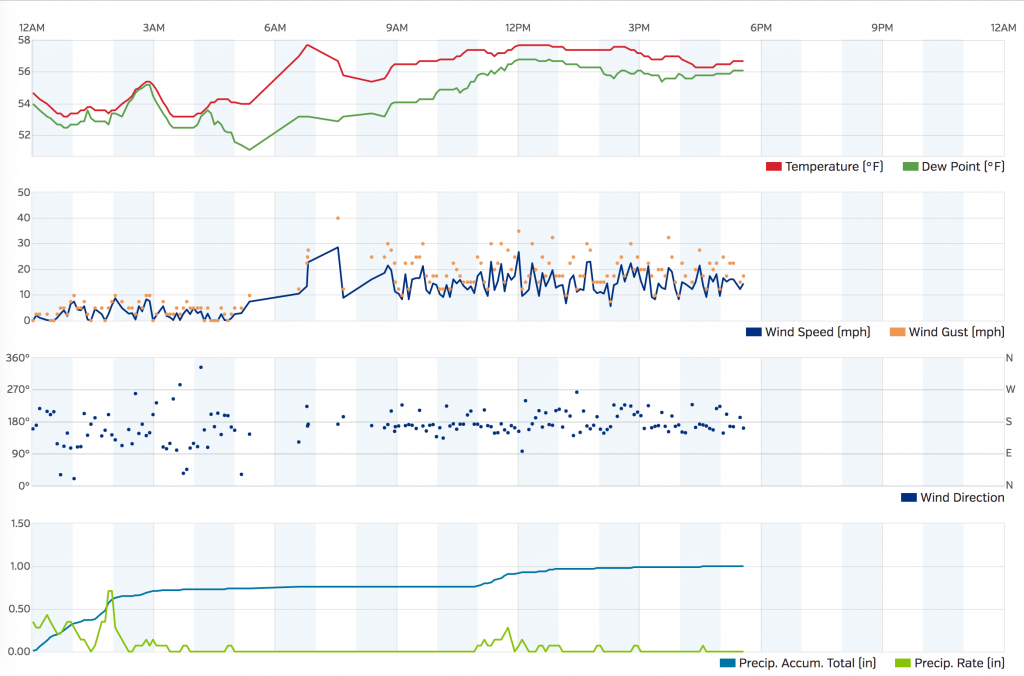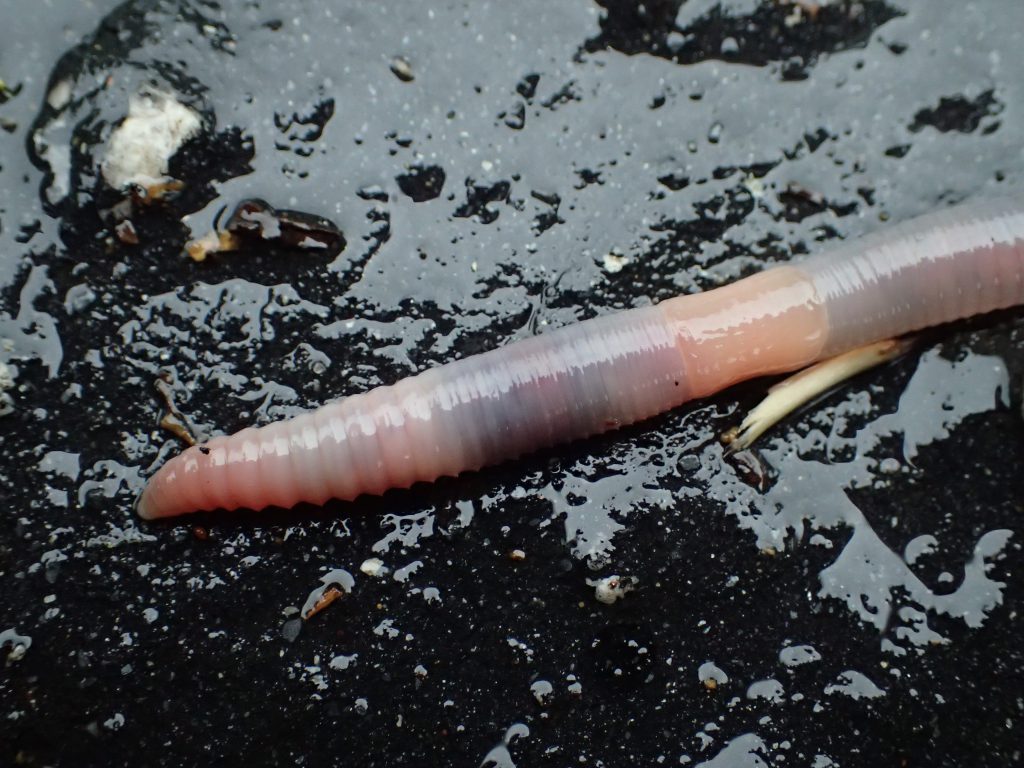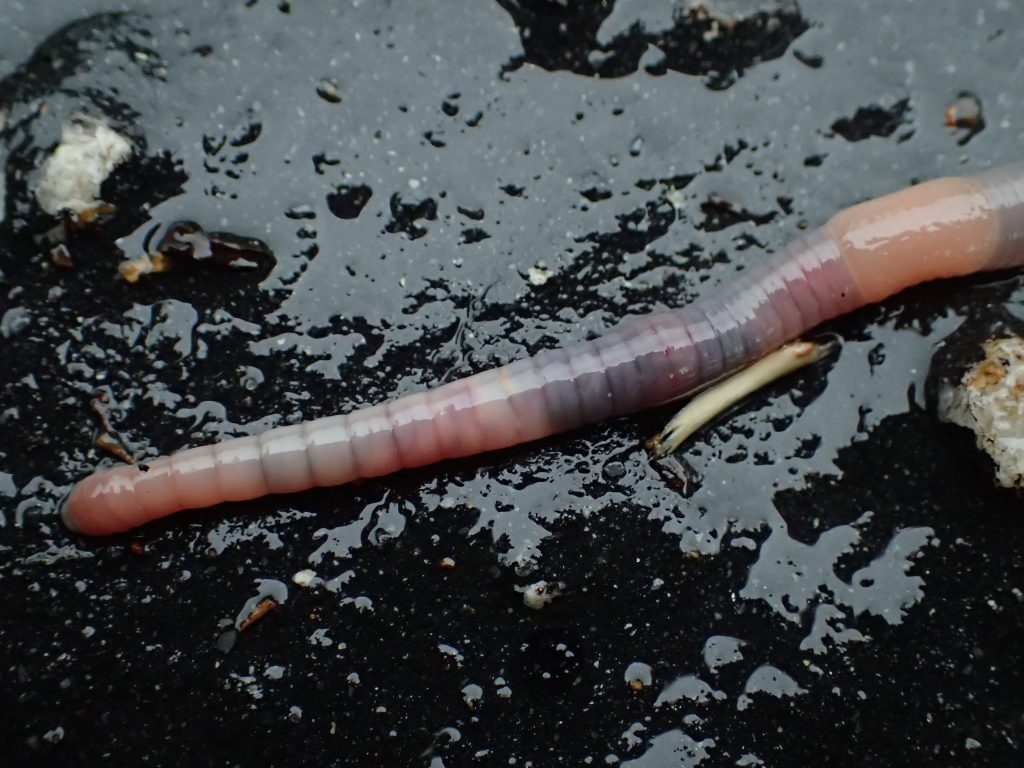Northern California is currently being pummeled by a meteorological phenomenon called an atmospheric river. The storms produced by these “rivers” tend to be warm and can be very wet, such as the Pineapple Express storms that carry atmospheric moisture from Hawai’i to California. The weather station on the roof of our house has recorded 4.26 inches of rain over the past three days, and more will come in the next few days. In addition to the rain, the atmospheric river has brought very strong winds, gusting to 40+ mph. Combined with the saturated ground, winds like this can uproot trees and utility poles. So far we haven’t lost power, but are prepared with candles, firewood, and extra water. . . just in case.
I am not a meteorologist, and this is not a blog about weather. I mention all the rain because it brought out the worms. Earthworms, to be more precise.
Earthworms are oligochaete worms in the phylum Annelida, which also contains the polychaetes (marine segmented worms) and hirudineans (leeches). The body plan for annelids is based on segmentation, or metamerism. Let me explain what that means.
Imagine a round water balloon. Now imagine two sets of rubber bands encircling the balloon along perpendicular axes. You’d have something like this:
where the green and red lines indicate different muscle types. Remember that we’re discussing a three-dimensional object here. We’ll call the red lines circular muscles, and the green lines longitudinal muscles. Now picture in your mind what happens when the circular muscles contract; how does this change the shape of the water balloon? What happens when the longitudinal muscles contract?
An annelid’s body consists of many fluid-filled segments, each with its own set of circular and longitudinal muscles. The segments are arranged along the anterior-posterior axis, with the head being located at the anterior end.
Adjacent segments are separated by a layer of tissue called a septum (anatomically speaking, a septum is any tissue that divides a cavity into two or more smaller spaces; think of the septum that divides your nasal cavity into left and right nostrils). An incidental amount of fluid may escape from one segment into the next, but for the most part they function as separate water balloons. Water isn’t compressible but is deformable, so contracting muscles around one part of the water balloon simply displaces that water to another part, and the balloon’s shape changes. Because each segment in our worm has its own complement of body wall musculature, its shape can be modified independently from that of its neighbors.
Rather than draw up another pedagogical worm, I’ll show you a real one. As I mentioned earlier all the recent rains have brought the earthworms out from their burrows. I was out and about myself this afternoon, and took pictures. This is the anterior (front) end of a worm. Not much of a head, is there? Earthworms are poorly cephalized, which makes sense when you consider that they live underground: an animal that spends almost all of its time in complete darkness has no need for eyes, and having sensory organs hanging off the body would impede its burrowing activities.
That pale pink apparently unsegmented bit of worm is the clitellum, a glandular structure used in reproduction. Another feature you can see is the difference in size among all the segments. Some of them are much wider than others. These are the localized deformations. The anterior-most segments are the widest; which type of muscle is contracted in this part of the worm? Which muscles are contracted in the segments immediately in front of the clitellum?
The annelid body plan originally evolved to facilitate burrowing through soft substrates. The fluid in each segment provides a stiffness against which the body wall muscles can contract, and the separation of adjacent segments allows the aforementioned localized deformations. An earthworm burrows by making its front end long and pointy (by contracting the circular muscles), jabbing it into the soil, swelling those anteriormost segments (by relaxing circular muscles and contracting longitudinal muscles), and pulling the rest of the body along. Next time you have a live earthworm at your disposal, watch how it moves either on top of or through the ground.
As you may imagine, while an earthworm’s body volume remains constant, its shape varies greatly. This has consequences for internal anatomy as well. For example, an earthworm’s gut is essentially a straight tube within a tube; it doesn’t have distinct compartments or side chambers as ours does. But it can’t really be straight, can it? If the overall body shape of an individual worm can change as much as we see in a burrowing earthworm, it follows that the internal morphology must be equally plastic. This means that the blood vessels and major nerve cord remain functional whether the worm is stretched out or scrunched up. Kinda hard to imagine that in the body of any vertebrates.
Does the title of this post make any sense now?





